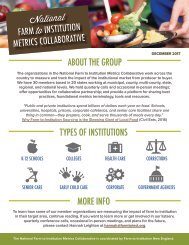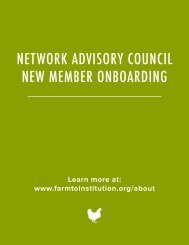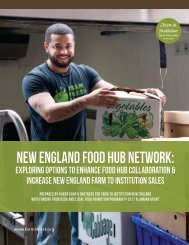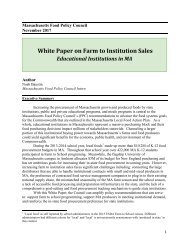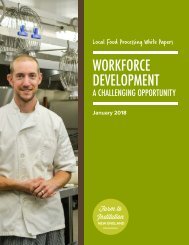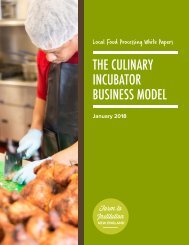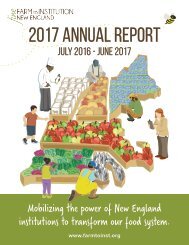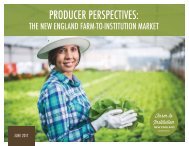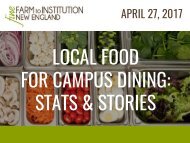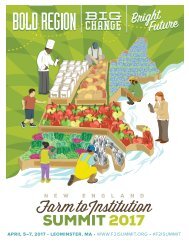Mad River Food Hub Case Study
Create successful ePaper yourself
Turn your PDF publications into a flip-book with our unique Google optimized e-Paper software.
KEY TAKEAWAYS<br />
1<br />
2<br />
3<br />
4<br />
Community partnerships are critical to success.<br />
Morris came to the idea for the food hub through involvement in the ongoing community<br />
conversations around economic development and local food. The partnerships<br />
established with different community organizations to apply for various grants were<br />
critical to funding the construction and outfitting of the facility.<br />
Regulators are a resource, not adversaries.<br />
Communicating early and often with both state and federal regulatory agencies<br />
helped identify and resolve potential roadblocks before they could derail the project.<br />
Approached in a spirit of good faith and partnership the regulators were willing to work<br />
with Morris to do something unprecedented.<br />
Recruiting customers ahead of time assures the right<br />
products and services are offered and drives quick<br />
adoption.<br />
Morris and his team of advisors had soft-circled 14 potential users of the MRFH before<br />
beginning the fit-out. Similarly, distribution only started once an anchor client was<br />
identified and the construction of a dry-curing space wasn’t begun until an anchor tenant<br />
was assured. In each case, the effort to engage potential customers helped avoid lost<br />
revenue and underutilized capacity, which would have been challenging to the business.<br />
A phased approach increases the odds of success.<br />
By separating out different services, and sequencing their launch in increasing order of<br />
difficulty the MRFH staff gave themselves time to learn from each stage of the project,<br />
increasing their chances of success for the next. The phased approach had two other<br />
critical advantages: first, it allowed the facility to quickly monetize existing assets<br />
(freezers) even while building out other services. Second, it sidestepped the possibility of<br />
delays on one front (e.g., USDA grant of inspection) preventing other uses.<br />
Find this case study and others on our website: www.farmtoinstitution.org/case-studies<br />
Learn more about Farm to Institution New England at www.farmtoinstitution.org<br />
FOOD PROCESSORS COMMUNITY OF PRACTICE CASE STUDY | MAD RIVER FOOD HUB PAGE 8




